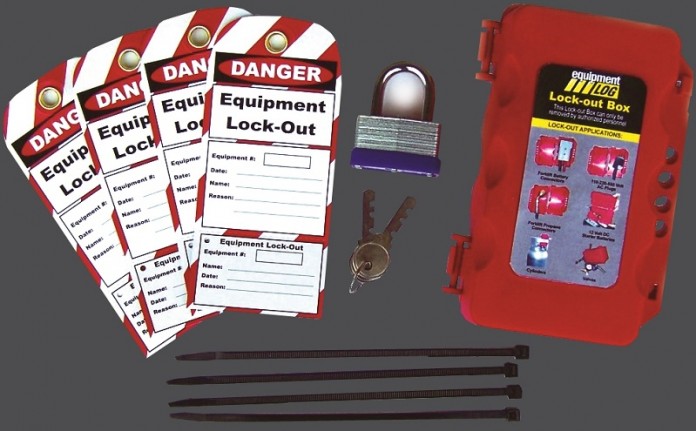There are a lot of cases of workers suffering serious injuries or death because a machine they were operating came back on accidentally. What causes such accidents is a failure to follow lockout safety protocols properly. Companies must ensure that there are safety lockout procedures in place to protect workers. Statistics indicate that lockout/tagout protocols prevent over 50,000 injuries every year. It is not uncommon for workers to ignore lockout procedures because they think the processes take up too much time.
What it Does
Lockout is a safety protocol used to ensure that machines undergoing servicing or maintenance are properly turned off before any work starts. This process prevents machines from turning back on at inopportune moments. Machines with certain energy sources are considered dangerous and should have lockout procedures in place. These energy sources can be pneumatic, gravitational, hydraulic, mechanical, chemical, or thermal. Part of a lockout procedure is to ensure that energy sources are in isolation and inoperative.

Aspects of Lockout
Understanding some basics of lockout is essential in providing a safe working environment for workers. Here are some of those aspects.
Energy control – there must be processes in a work setting to cater to the control of hazardous energy sources. Cutting off the power source is one of the ways to do that. A worker must check all fuses, circuit breakers, and switches to ensure that the energy source is turned off and isolated from the equipment due for lockout. An important point to note is that pulling of electrical switches under load can cause serious accidents because of arcing.
The other element is employee training. It is important that all workers understand lockout safety and why it is important. An employer cannot just start applying lockout-tagout procedures without knowing if employees know how to follow them. Properly training employees will minimise the risk of lockout accidents. Workers must also know about any updates to safety protocols and instances when there is new machinery to operate.
Lockout safety also involves the use of lockout devices and tags. These are tools that prevent machines from accidentally activating. If a worker is doing maintenance on a particular machine, they have to use a lock for the energy source and tag it to indicate that is it properly locked and shouldn’t be opened. Doing this avoids the risk of other workers turning the equipment back on.
There is also the inspection aspect, which is paramount. It is not sufficient to just train and establish procedures once. Over time, workers may get lax and start overlooking certain lockout measures. Inspections allow supervisors or employers to find out if employees are following regulations. It is also advisable to check the methods that workers are using to make certain there are no dangerous shortcuts.
Lockout Best Practices
When applying lockout safety protocols, one of the best practices is to ensure that each worker has an individual lock. If an authorised employee wants to carry out repairs or maintenance, then they can guarantee their protection by using their own padlock and tags. If more than one employee has to work on one machine, then each one should tag the equipment until they finish.
The tags and locks in use should clearly indicate the person carrying out the lockout. It is essential for other workers to know who is responsible for a lockout. The tag should include the name, date and the purpose for the lockout. Identification is particularly imperative on a machine with more than one worker.
An employer should ensure that the tools used for lockout are durable and reliable. In some instances, workers may remove locks or tags accidentally if they are not tough enough; hence, rendering them ineffective. Padlocks and tags should be durable and high-standard to withstand the harsh environment in particular workplaces. It would be a waste if tags fell off due to exposure to moisture or a padlock failed to lock from too much dirt accumulation.
Visibility is of extreme importance when using lockout devices. Padlocks should have different colours, shapes and sizes to cater to various requirements. Workers will have an easier time spotting padlocks or tags in two adjacent machines if they are not of the same colour.
During lockout, it is vital to check energy sources regularly to ensure that there is no re-accumulation. An energy source that needs to be in isolation should remain that way for the duration of the lockout.
